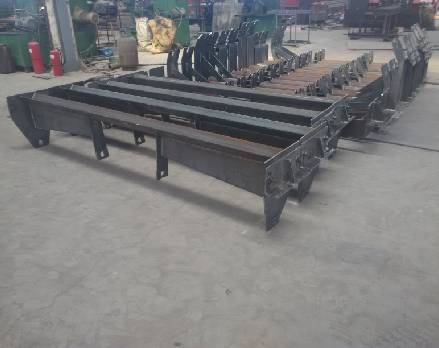 Afrikaans
Afrikaans  Albanian
Albanian  Amharic
Amharic  Arabic
Arabic  Armenian
Armenian  Azerbaijani
Azerbaijani  Basque
Basque  Belarusian
Belarusian  Bengali
Bengali  Bosnian
Bosnian  Bulgarian
Bulgarian  Catalan
Catalan  Cebuano
Cebuano  Corsican
Corsican  Croatian
Croatian  Czech
Czech  Danish
Danish  Dutch
Dutch  English
English  Esperanto
Esperanto  Estonian
Estonian  Finnish
Finnish  French
French  Frisian
Frisian  Galician
Galician  Georgian
Georgian  German
German  Greek
Greek  Gujarati
Gujarati  Haitian Creole
Haitian Creole  hausa
hausa  hawaiian
hawaiian  Hebrew
Hebrew  Hindi
Hindi  Miao
Miao  Hungarian
Hungarian  Icelandic
Icelandic  igbo
igbo  Indonesian
Indonesian  irish
irish  Italian
Italian  Japanese
Japanese  Javanese
Javanese  Kannada
Kannada  kazakh
kazakh  Khmer
Khmer  Rwandese
Rwandese  Korean
Korean  Kurdish
Kurdish  Kyrgyz
Kyrgyz  Lao
Lao  Latin
Latin  Latvian
Latvian  Lithuanian
Lithuanian  Luxembourgish
Luxembourgish  Macedonian
Macedonian  Malgashi
Malgashi  Malay
Malay  Malayalam
Malayalam  Maltese
Maltese  Maori
Maori  Marathi
Marathi  Mongolian
Mongolian  Myanmar
Myanmar  Nepali
Nepali  Norwegian
Norwegian  Norwegian
Norwegian  Occitan
Occitan  Pashto
Pashto  Persian
Persian  Polish
Polish  Portuguese
Portuguese  Punjabi
Punjabi  Romanian
Romanian  Russian
Russian  Samoan
Samoan  Scottish Gaelic
Scottish Gaelic  Serbian
Serbian  Sesotho
Sesotho  Shona
Shona  Sindhi
Sindhi  Sinhala
Sinhala  Slovak
Slovak  Slovenian
Slovenian  Somali
Somali  Spanish
Spanish  Sundanese
Sundanese  Swahili
Swahili  Swedish
Swedish  Tagalog
Tagalog  Tajik
Tajik  Tamil
Tamil  Tatar
Tatar  Telugu
Telugu  Thai
Thai  Turkish
Turkish  Turkmen
Turkmen  Ukrainian
Ukrainian  Urdu
Urdu  Uighur
Uighur  Uzbek
Uzbek  Vietnamese
Vietnamese  Welsh
Welsh  Bantu
Bantu  Yiddish
Yiddish  Yoruba
Yoruba  Zulu
Zulu herringbone rubber lagging
Herringbone Rubber Lagging A Comprehensive Overview
Herringbone rubber lagging has become an essential component in various industries, particularly in the fields of mining, quarrying, and material handling. It involves the application of rubber to conveyor pulleys, providing a range of benefits that enhance operational efficiency and equipment longevity. With its distinctive herringbone pattern, this type of lagging not only serves practical purposes but also contributes to improved performance in heavy-duty applications.
The primary function of herringbone rubber lagging is to improve the grip between the conveyor belt and pulleys. The herringbone pattern, characterized by a series of V-shaped lines, increases the surface area for friction. This heightened friction is crucial, especially in heavy-load situations, as it helps to prevent slippage and ensures that the conveyor operates smoothly and efficiently. The improved grip translates into enhanced material handling, reduced wear on the belt, and ultimately, lower operational costs.
One of the most significant advantages of herringbone rubber lagging is its durability. Rubber is inherently resistant to wear and tear, making it an ideal material for applications exposed to abrasive materials and harsh working conditions. The herringbone design not only enhances the mechanical properties of the lagging but also contributes to greater resilience against environmental factors such as moisture, temperature fluctuations, and chemical exposure. As a result, facilities using herringbone rubber lagging can expect longer service intervals and reduced maintenance costs.
herringbone rubber lagging

Moreover, the installation of herringbone rubber lagging is straightforward, requiring minimal downtime for operations
. This ease of application is particularly beneficial for facilities that rely on continuous conveyor systems, as it allows for quick replacements without significant interruption. Furthermore, the flexibility of the rubber material ensures a tight fit on various pulley sizes and types, making it a versatile solution for many installations.Beyond its practical applications, herringbone rubber lagging also plays a role in noise reduction. Conveyor systems can generate significant noise during operation, which may lead to a less favorable working environment. The rubber lagging acts as a sound-dampening material, helping to minimize vibrations and noise levels, creating a more pleasant atmosphere for workers and contributing to overall workplace safety.
In addition to its functional benefits, herringbone rubber lagging can also enhance the aesthetic appeal of conveyor systems. The distinctive pattern not only provides a professional appearance but also signals a commitment to using high-quality materials and technology. This can be particularly important for companies looking to enhance their brand image and present themselves as leaders in their respective industries.
In conclusion, herringbone rubber lagging is an invaluable investment for industries that rely on conveyor systems for their operations. Its combination of durability, increased frictional grip, resistance to environmental factors, ease of installation, and noise-reduction capabilities makes it a top choice for ensuring operational efficiency and equipment longevity. As technology advances and new materials emerge, the application of herringbone rubber lagging will continue to evolve, further enhancing its role in modern industrial applications. Embracing this technology can lead to improved productivity, cost savings, and a more favorable working environment.
-
Revolutionizing Conveyor Reliability with Advanced Rubber Lagging PulleysNewsJul.22,2025
-
Powering Precision and Durability with Expert Manufacturers of Conveyor ComponentsNewsJul.22,2025
-
Optimizing Conveyor Systems with Advanced Conveyor AccessoriesNewsJul.22,2025
-
Maximize Conveyor Efficiency with Quality Conveyor Idler PulleysNewsJul.22,2025
-
Future-Proof Your Conveyor System with High-Performance Polyurethane RollerNewsJul.22,2025
-
Driving Efficiency Forward with Quality Idlers and RollersNewsJul.22,2025





























